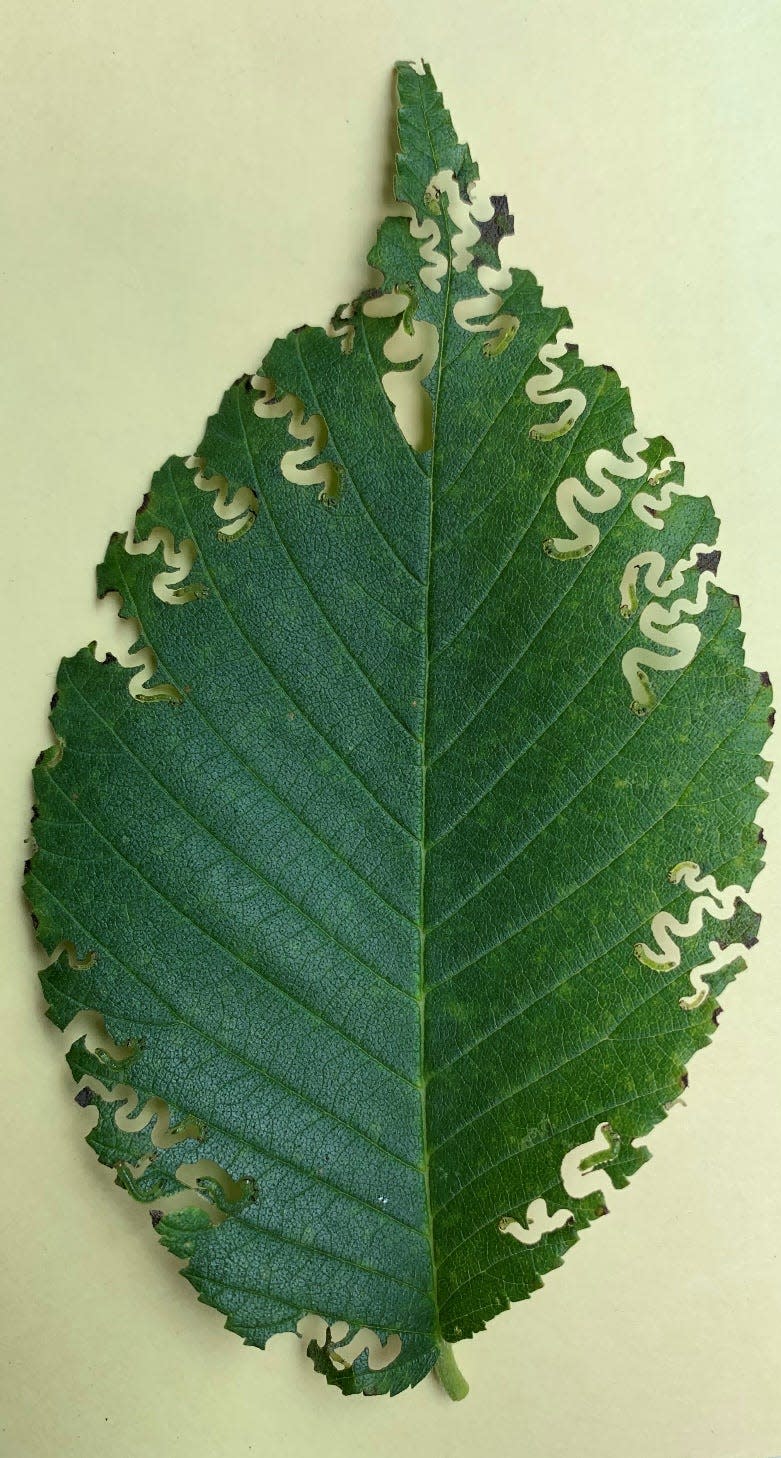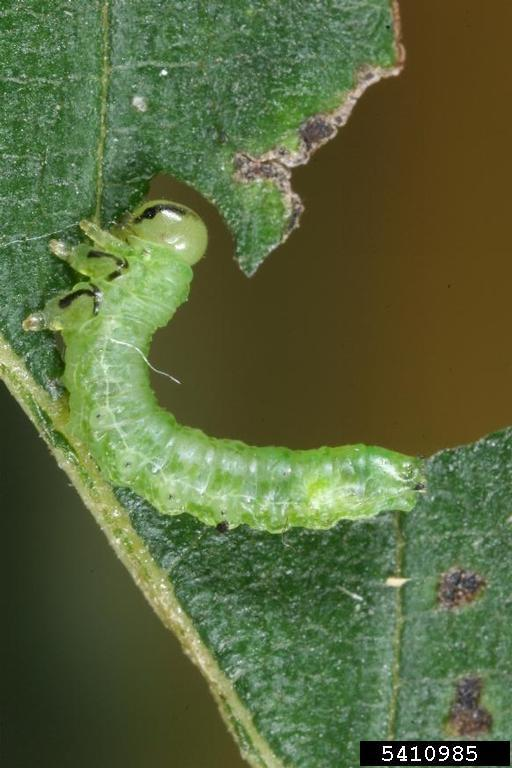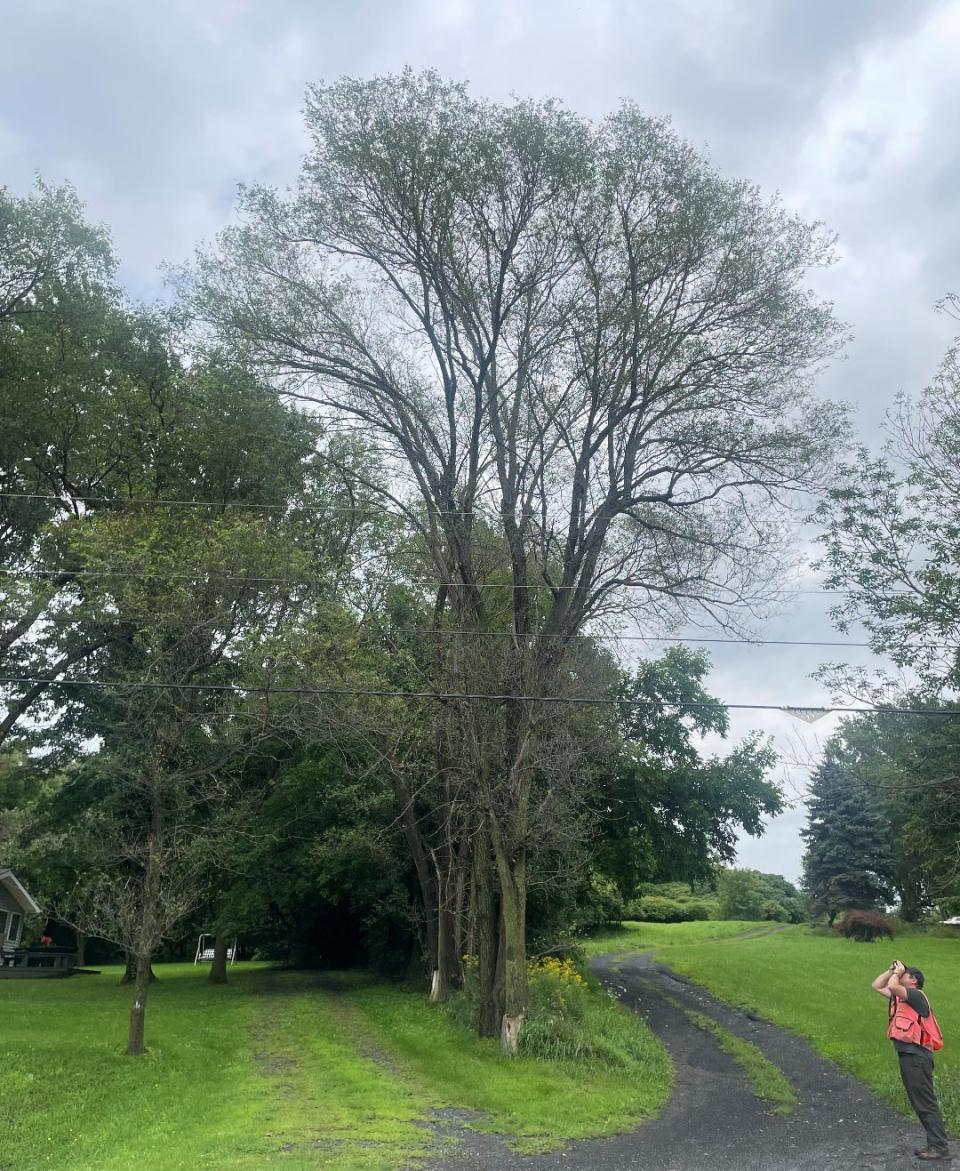Move over spongy moth caterpillar: there's a new bug in town. And, elms look delicious.
Vermont has a new critter to be bugged by this summer. Gone is the spongy moth caterpillar ravaging oak trees like we saw the past two years and in its place is the elm zigzag sawfly that can fully defoliate elm trees.
This insect isn't prolific in the area yet, but it is an invasive species that only made it to the continent within the last few years. It's been confirmed in Vermont, showing up in northern areas of the state this season.
Here's what to know about the elm zigzag sawfly, how to spot it and why you should report it if you do encounter the pest.

Elm zigzag sawfly not only zig-zags through elm leaves but has zig-zagged its way across the world
So what's with the "zigzag" part of the name? The signature eating pattern the larvae leave behind looks like meandering curves or squiggly lines through the leaf. Evidence of these feeding trails are the best indicator for the species as their pupa and adult stages resemble other insects.
The fly larvae typically eat their way through leaves between May and October, and there can be several generations of the bug each year. Originally from the Asian continent − specifically China and Japan − there the insect has caused destructive defoliation of a variety of elm species. In 2020, the fly was first found in Canada. By 2021 it had made it to Virginia and in 2022 spread to a few other U.S. states.

After suspected activity in the Missisquoi National Wildlife Refuge in Swanton this May, the Department of Forests, Parks and Recreation and Agency of Agriculture, Food and Markets collected and sent samples to the USDA, which confirmed its presence. Since then, Vermont sightings have included Alburg, North Hero and Milton.
Smaller groupings of the insect aren't as noticeable or damaging. Once the population rises the insect can fully defoliate a tree. If the same tree suffers from losing its leaves in subsequent years, it could kill the tree.
What you can do to save trees from the invasive elm zigzag sawfly
Bugs can be removed by hand in small quantities. Pesticides are effective against the larvae, especially if applied in the spring. However the chemicals used could kill off non-invasive species as well.
You could also get rid of cocoons. Summer cocoons are loosely threaded and white and are usually attached to the underside of elm leaves. As the weather changes, the overwintering cocoons have dense walls and are placed in the leaf litter just above the ground or near the soil.

Interestingly, the black-bodied adult sawfly seem to only be female and reproduce parthenogenetically, a term meaning there is no mating. The flies can lay up to 60 eggs at a time, each egg in its own place along the serrations of an elm leaf.
Because the species has the ability to wipe out swaths of elm trees, the Vermont Department of Forest, Parks and Recreation is asking for Vermonters' help identifying where the bugs have made a home to mitigate their presence as much as possible. The state asks Vermonters to report sightings online at vtinvasives.org/get-involved/report/reporting-an-invasive-insect.
Want to know more about this insect? Find additional information at vtinvasives.org/invasive/elm-zigzag-sawfly.
Contact reporter April Barton at abarton@freepressmedia.com or 802-660-1854. Follow her on Twitter @aprildbarton.
This article originally appeared on Burlington Free Press: The invasive elm zigzag sawfly makes it to Vermont

